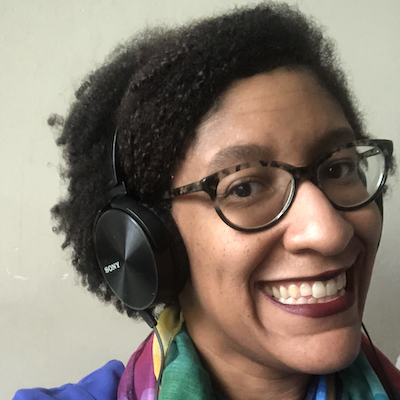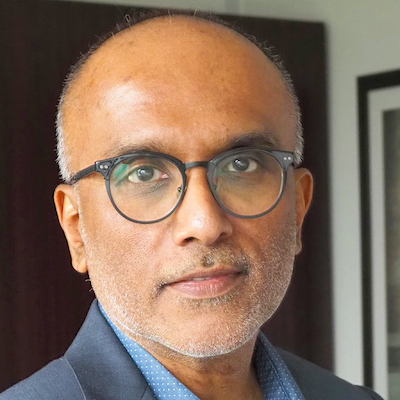The news industry will stop saying overdue UX fixes are too hard
Perhaps you’ve had this experience — no, actually, anyone who’s ever clicked on a social link to a paywalled news site has. You click onto a site that you actually subscribe to, and creak, creak, paywall…password…sigh.
You don’t remember your password — or you’re on your phone and it’s not saved properly there. Either way, some other push notification pops up on your screen, and you decide that reading that article or watching that video just isn’t worth all the effort.
Every time I’ve asked someone about this click-hiccup on Twitter or put it to product and software engineers in newsrooms I visit, I’m told that it’s just a thorny problem that’s too hard to solve. Really hard. Too hard. Super technically sophisticated.
This isn’t a new problem — the popup paywalls and password logins for news linked on social media sites. The problem is growing more important. Maybe the journalist can see that Covid medical journal article on PubMed, or that deep dive on The Atlantic — but you, user/reader can’t.
I’ve got news for you, internet and news software people: We’re in the metaverse, now officially. We’ve got AI that can alarmingly recognize our faces, there are robots that can reproduce, and VR has become a holiday splurge at the price point of a new gaming system.
Saying that fixing this web hiccup is just too hard — one that we in the audience aren’t willing to accept anymore.
“Too hard” isn’t an acceptable answer in a college classroom, much less from some of the smartest technically minded people in the world. To allow this continued excuse for this click-hiccup is to ignore the kind of usability issues that are literally preventing even the most motivated news consumers from getting to news they want to read.
And it’s more insulting when that click-hiccup is keeping you from an news site you actually subscribe to. For mid-size metro newspapers, whose tech sophistication isn’t at par with their national counterparts, failure to solve this problem could mean the difference between survival and subscription cancellations. As motivated news consumers have more and competition for their attention, the desire to click on any one news link diminishes.
Journalists producing well-substantiated content that links across the web also are at fault — forgetting the rest of the public doesn’t have the logins, memberships, or motivations to click through to their carefully-sourced claims.
It behooves us to figure out how to solve these most basic technical and user issues. Perhaps this means working more directly with platforms. Perhaps this means asking subscribers to opt in to more tracking. I recall in my early morning phone browsing trying to approve something like this — whatever it was, it didn’t work.
We’ve reached an apogee of some of the most beautiful digital storytelling we’ve ever seen. Most national news outlets have reached a point where they cannot be described as simply text- or video-based — they’re real members of a multimedia multiverse that I could only have dreamed of in 2006, when I started graduate school to study all this.
But failure to solve basic UX problems isn’t just embarrassing — it’s also an example of news outlets’ continued inability to realize that users have to be at the center of any sort of future success, and building the loyalty of your audience takes work.
We can talk strategy, innovation, business models, and beyond, but being unable to click through on my phone to a news outlet I pay for is simply inexcusable — and for those outlets I don’t pay for yet, a real disincentive to visit at all.
Those of us reading Nieman Lab are not the normal universe of news consumers. I know this bothers you, too. To put it simply, long-lasting, well-known UX are getting in the way of sustainability.
Nikki Usher is a professor at the University of Illinois and author of News for the Rich, White, and Blue: How Place and Power Distort American Journalism.

Perhaps you’ve had this experience — no, actually, anyone who’s ever clicked on a social link to a paywalled news site has. You click onto a site that you actually subscribe to, and creak, creak, paywall…password…sigh.
You don’t remember your password — or you’re on your phone and it’s not saved properly there. Either way, some other push notification pops up on your screen, and you decide that reading that article or watching that video just isn’t worth all the effort.
Every time I’ve asked someone about this click-hiccup on Twitter or put it to product and software engineers in newsrooms I visit, I’m told that it’s just a thorny problem that’s too hard to solve. Really hard. Too hard. Super technically sophisticated.
This isn’t a new problem — the popup paywalls and password logins for news linked on social media sites. The problem is growing more important. Maybe the journalist can see that Covid medical journal article on PubMed, or that deep dive on The Atlantic — but you, user/reader can’t.
I’ve got news for you, internet and news software people: We’re in the metaverse, now officially. We’ve got AI that can alarmingly recognize our faces, there are robots that can reproduce, and VR has become a holiday splurge at the price point of a new gaming system.
Saying that fixing this web hiccup is just too hard — one that we in the audience aren’t willing to accept anymore.
“Too hard” isn’t an acceptable answer in a college classroom, much less from some of the smartest technically minded people in the world. To allow this continued excuse for this click-hiccup is to ignore the kind of usability issues that are literally preventing even the most motivated news consumers from getting to news they want to read.
And it’s more insulting when that click-hiccup is keeping you from an news site you actually subscribe to. For mid-size metro newspapers, whose tech sophistication isn’t at par with their national counterparts, failure to solve this problem could mean the difference between survival and subscription cancellations. As motivated news consumers have more and competition for their attention, the desire to click on any one news link diminishes.
Journalists producing well-substantiated content that links across the web also are at fault — forgetting the rest of the public doesn’t have the logins, memberships, or motivations to click through to their carefully-sourced claims.
It behooves us to figure out how to solve these most basic technical and user issues. Perhaps this means working more directly with platforms. Perhaps this means asking subscribers to opt in to more tracking. I recall in my early morning phone browsing trying to approve something like this — whatever it was, it didn’t work.
We’ve reached an apogee of some of the most beautiful digital storytelling we’ve ever seen. Most national news outlets have reached a point where they cannot be described as simply text- or video-based — they’re real members of a multimedia multiverse that I could only have dreamed of in 2006, when I started graduate school to study all this.
But failure to solve basic UX problems isn’t just embarrassing — it’s also an example of news outlets’ continued inability to realize that users have to be at the center of any sort of future success, and building the loyalty of your audience takes work.
We can talk strategy, innovation, business models, and beyond, but being unable to click through on my phone to a news outlet I pay for is simply inexcusable — and for those outlets I don’t pay for yet, a real disincentive to visit at all.
Those of us reading Nieman Lab are not the normal universe of news consumers. I know this bothers you, too. To put it simply, long-lasting, well-known UX are getting in the way of sustainability.
Nikki Usher is a professor at the University of Illinois and author of News for the Rich, White, and Blue: How Place and Power Distort American Journalism.
Mike Rispoli

Joanne McNeil

A.J. Bauer

Chase Davis

Anita Varma

Errin Haines

Rachel Glickhouse

Anika Anand

Catalina Albeanu

Jesenia De Moya Correa

Amy Schmitz Weiss

Don Day

Cindy Royal

Megan McCarthy

Gordon Crovitz

James Salanga

Jennifer Coogan

Julia Munslow

Raney Aronson-Rath

Jonas Kaiser

Gonzalo del Peon

Daniel Eilemberg

Mary Walter-Brown

Jesse Holcomb

Simon Allison

Nik Usher

Kathleen Searles Rebekah Trumble

Rasmus Kleis Nielsen

Andrew Freedman

Laxmi Parthasarathy

Whitney Phillips

Stephen Fowler

Tom Trewinnard

j. Siguru Wahutu

Simon Galperin

Millie Tran

Gabe Schneider

Zizi Papacharissi

Victor Pickard

Tony Baranowski

Sam Guzik

Joshua P. Darr

Shannon McGregor Carolyn Schmitt

Jody Brannon

Ståle Grut

Burt Herman

John Davidow

Joy Mayer

Amara Aguilar

Natalia Viana

Ariel Zirulnick

Candace Amos

Joni Deutsch

Mario García

Wilson Liévano

Matt DeRienzo

Stefanie Murray

Kendra Pierre-Louis

Paul Cheung

S. Mitra Kalita

Juleyka Lantigua

Tamar Charney

Sarah Marshall

Brian Moritz

David Skok

Joe Amditis

Doris Truong

Christina Shih

Cristina Tardáguila

Parker Molloy

Christoph Mergerson

Jessica Clark

Mandy Jenkins

Chicas Poderosas

Robert Hernandez

David Cohn

Matthew Pressman

Michael W. Wagner

Francesco Zaffarano

James Green

Eric Nuzum

Kristen Jeffers

Richard Tofel

AX Mina

Jennifer Brandel

Kerri Hoffman

Jim Friedlich

Alice Antheaume

Izabella Kaminska

Shalabh Upadhyay

Matt Karolian

Cherian George

Kristen Muller

Julia Angwin

Larry Ryckman

Moreno Cruz Osório

Anthony Nadler

Meena Thiruvengadam

Melody Kramer

Sarah Stonbely
